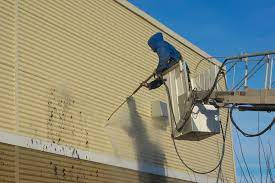A Comprehensive Guide to Power Washing: Different Types, Techniques, and Tools
What You Need to Know About Pressure Washing for Maximum Impact
There are many different types of Power Washing Estimate available, each of which offers a unique set of advantages and disadvantages. From low-pressure washing to high pressure washing, the techniques and tools used in power washing can be confusing.
Low-Pressure Washing: Low-pressure washing is the most basic and affordable form of power washing. It uses very little water pressure, making it ideal for gently removing dirt and grime from delicate surfaces like vinyl siding or stucco. This type of power washing also requires minimal setup time and is well suited for DIYers who want a quick, low-cost solution.

Medium-Pressure Washing: Medium-pressure washing is the most popular type of power washer. It uses more water pressure than low-pressure washing and provides a more thorough cleaning. This kind of power washer is best used on surfaces that are moderately dirty or caked with dirt and grime. This type of power washer is typically used on driveways, patios, decks, fences, siding, and brick walls.
High-Pressure Washing: High-pressure washing is the most powerful form of power washing and is generally best suited for heavy duty cleaning jobs like graffiti removal or industrial cleaning. This type of power washer uses very high pressure, and it’s important to use extreme care when using these machines as they can cause serious damage if not used properly.
No matter which type of Power Washing Estimate you choose, it’s important to use the right tools and techniques for the job. Different surfaces require different power washers, with some requiring low-pressure washing while others may need high pressure washing. Be sure to do your research before starting any power washing project to ensure you’re using the right technique for the best results.
